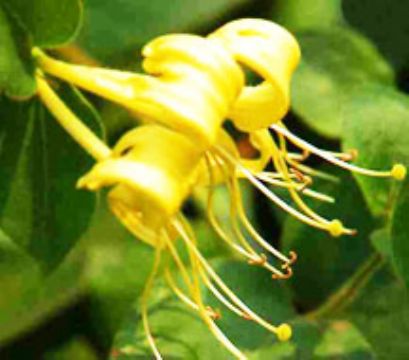Detailed Selling Lead Description
Original Plant:Is the dried flower bud or opening flower of Lonicera japonica Thunb., Lonicera hypoglauca Miq., Lonicera confusa DC. or Lonicera dasystyla Rehd. (Fam. Caprifoliaceae).
Specification:4%-99%
Chemical Name:3-O-caffeoylquinic acid
Test Method:HPLC
Molecular Formula:C16H18O9
Molecular Weight :354.31
CAS No.:327-97-9
More
EINECS No.:206-325-6
Melting Point:205-209°C
Solubility:Good solubility in water,easy soluble in hot water,ethanol, acetone,hard soluble in ethyl acetate.
Pharmacology Action:Chlorogenic acid, an ester of caffeic acid and quinic acid, is a major phenolic compound in coffee, but is also found widespread in plants and can be isolated from the leaves and fruit This compound, long known as an antioxidant, also slows the release of glucose into the bloodstream after a meal.
This acid is an important factor in plant metabolism. It is also an antioxidant and an inhibitor of the tumor promoting activity of phorbol esters; at concentrations as high as 100 µg/L, does not inhibit the 5-lipoxygenase activity of ionophore-stimulated human polymorphonuclear leukocytes.
Chlorogenic acid and caffeic acid are antioxidants in vitro and might therefore contribute to the prevention of Type 2 Diabetes Mellitus and cardiovascular disease .
Chlorogenic acid is an important factor in plant metabolism. It is also an antioxidant and an inhibitor of the tumor promoting activity of phorbol esters.Chlorogenic acid, at concentrations as high as 100 um, does not inhibit the 5-lipoxygenase activity of ionophore-stimulated human polymorphonuclear leukocytes.
Chlorogenic acid,daily intake in coffee drinkers is 0.5–1g. Chlorogenic acid and caffeic acid are antioxidants in vitro and might therefore contribute to the prevention of cardiovascular disease.
Chlorogenic acid has been proven in animal studies in vitro to inhibit the hydrolysis of the glucose-6-phosphate enzyme in an irreversible fashion. This mechanism allows chlorogenic acid to reduce hepatic glycogenolysis (transformation of glycogen into glucose) and to reduce the absorption of new glucose. In addition, in vivo studies on animal subjects have demonstrated that the administration of chlorogenic acid lessens the hyperglycemic peak resulting from the glycogenolysis brought about by the administering of glucagen,a hyperglycemiant hormone. The studies also confirmed a reduction in blood glucose levels and an increase in the intrahepatic concentrations of glucose-6-phosphate and of glycogen.
Chlorogenic acid can be used as anti-infectious active ingredient, it has wide anti-virus, anti-bacteria effects, and has relatively lower toxicity and side-effects. It has obvious anti-infectious effects, and does not like to lead Anti-microbial Resistance.
Due to its obvious anti-infectious effects, it not only can be used in pharmaceutical
